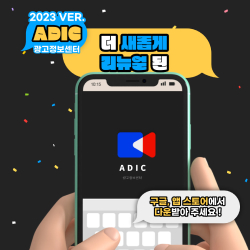- [CJ?메조미디어] 2025 타겟?리포트_50대
- [플레이디] 2025 광고·마케팅 트렌드 전망 리포트
- [나스미디어]2024년 11월 2025 디지털 미디어 & 마케팅 전망
- [2025년 7월] 2025 상반기 디지털 미디어 & 마케팅 결산
- [인크로스]2025년 1월 미디어 이슈 리포트
- [2025년 5월] 2025 NPR 요약보고서
- 기아차 SOUL의 혁신적인 제품전략 -소비자의 soul을 움직이다-
- [Case Study] 디지털 미디어 광고 사례
- 조선-중앙-동아일보의 유사성과 차별성:1면 구성과 사설의 이념성을 중심으로
- [2024년 12월] 한 장이면 고민 끝! 2025 마케팅 이슈 캘린더
자료요약
이 연구는 개별 소비자 중심의 마케팅이 필수적인 상황임에도 불구하고 소비자 분석을 세대론에 기대어 살펴보는 현상에 문제를 제기하며, 한국 소비자들의 1) 라이프스타일과 소비가치 요인분석, 2) 한국 소비자 군집분석 및 특성 파악, 3) 한국 소비자 집단, 매체별 광고 효과를 살펴보고자 했다. 이를 위해 서울 및 수도권 거주자, TV?유튜브, 네이버/다음 중 2개 이상 시청한 자 700명을 대상으로 온라인설문조사를 실시하여 자료를 얻었다. 연구결과, 한국 소비자의 라이프스타일은 DIY, 종교적 삶, 트렌디함의 3가지 유형, 소비가치는 실용안전, 저가, 쾌락, 심미, 혁신, 공동체, 자율성의 7가지 유형으로 나왔다. 한국의 소비자 집단은 비지슈머(일에 치여 바쁜 직장인), 무소슈머(무색무취의 소극적 소비자), 모스트슈머(모험적인 스마트 트렌드세터), 유틸슈머(전방위적 실용 소비자)로 구성됐다. 마지막으로 광고 효과는 소비문화를 이끄는 모스트슈머 집단이 TV, 유튜브, 포털, 페이스북, 인스타그램, OTT(over-the-top) 등의 모든 매체에서 다양한 광고 효과가 높게 나타났다. 유틸슈머도 새로움을 지향하고 보다 좋은 물건을 구입하는데 관심이 많아 모스트슈머 다음으로 광고 효과가 높은 편이었다. 무소슈머는 온라인 매체의 광고효과가 상대적으로 낮았으며, 비지슈머는 구매의도는 낮았으나 추천의도는 높은 편이었다. 이 같은 연구결과를 바탕으로 라이프스타일과 소비가치에 기반을 둔 소비자 집단 도출과 광고 효과의 이론적 및 실무적 함의를 논했다.
The purpose of this study is to classify and profile Korean consumers based on lifestyle and consumption values instead of cohort or generation, and to investigate advertising effects across several media channels. In this context, we explored 1) subfactors of lifestyle and consumption values in the Korean context, 2) cluster groups of Korean consumers based on those subfactors and 3) differences of advertising effects among those cluster groups. An online survey was conducted on 700 Seoul residents who reported viewing similar advertisements on at least two of the following types of media: television (TV), YouTube, and/or Naver/Daum portal websites. As a result, we identified three lifestyle subfactors: DIY, religious life, and trendy styles. We also identified seven consumption value subfactors: practical, safety, low-cost, pleasure, aesthetics, innovation, community, and autonomy. Using the identified subfactors, we divided the respondents into four groups: Busy-sumers (workaholics who lack the time to shop), Muso-sumers (tasteless and passive consumers), Most-sumers (adventurous and smart trendsetters), and Utility-sumers (practical and catch-all consumers). Lastly, when we compared advertising effects on the four consumer groups across various media, such as TV, YouTube, portals, Facebook, Instagram and streaming services, the Most-sumer group was the most affected by the advertisements, followed by the Utility-sumers, who were interested in exploring and purchasing new or better products and services. Muso-sumers showed a relatively low advertising effect through online media, while Busy-sumers ironically showed both low purchase intention and high recommendation intention. Theoretical and practical implications are discussed.
The purpose of this study is to classify and profile Korean consumers based on lifestyle and consumption values instead of cohort or generation, and to investigate advertising effects across several media channels. In this context, we explored 1) subfactors of lifestyle and consumption values in the Korean context, 2) cluster groups of Korean consumers based on those subfactors and 3) differences of advertising effects among those cluster groups. An online survey was conducted on 700 Seoul residents who reported viewing similar advertisements on at least two of the following types of media: television (TV), YouTube, and/or Naver/Daum portal websites. As a result, we identified three lifestyle subfactors: DIY, religious life, and trendy styles. We also identified seven consumption value subfactors: practical, safety, low-cost, pleasure, aesthetics, innovation, community, and autonomy. Using the identified subfactors, we divided the respondents into four groups: Busy-sumers (workaholics who lack the time to shop), Muso-sumers (tasteless and passive consumers), Most-sumers (adventurous and smart trendsetters), and Utility-sumers (practical and catch-all consumers). Lastly, when we compared advertising effects on the four consumer groups across various media, such as TV, YouTube, portals, Facebook, Instagram and streaming services, the Most-sumer group was the most affected by the advertisements, followed by the Utility-sumers, who were interested in exploring and purchasing new or better products and services. Muso-sumers showed a relatively low advertising effect through online media, while Busy-sumers ironically showed both low purchase intention and high recommendation intention. Theoretical and practical implications are discussed.
목차
1. 서론
2. 문헌연구
3. 연구방법
4. 연구결과
5. 논의
참고문헌
2. 문헌연구
3. 연구방법
4. 연구결과
5. 논의
참고문헌
#라이프스타일
#소비가치
#소비자 유형
#광고 매체
#Lifestyle
#Consumption value
#Consumer type
#Advertising media











